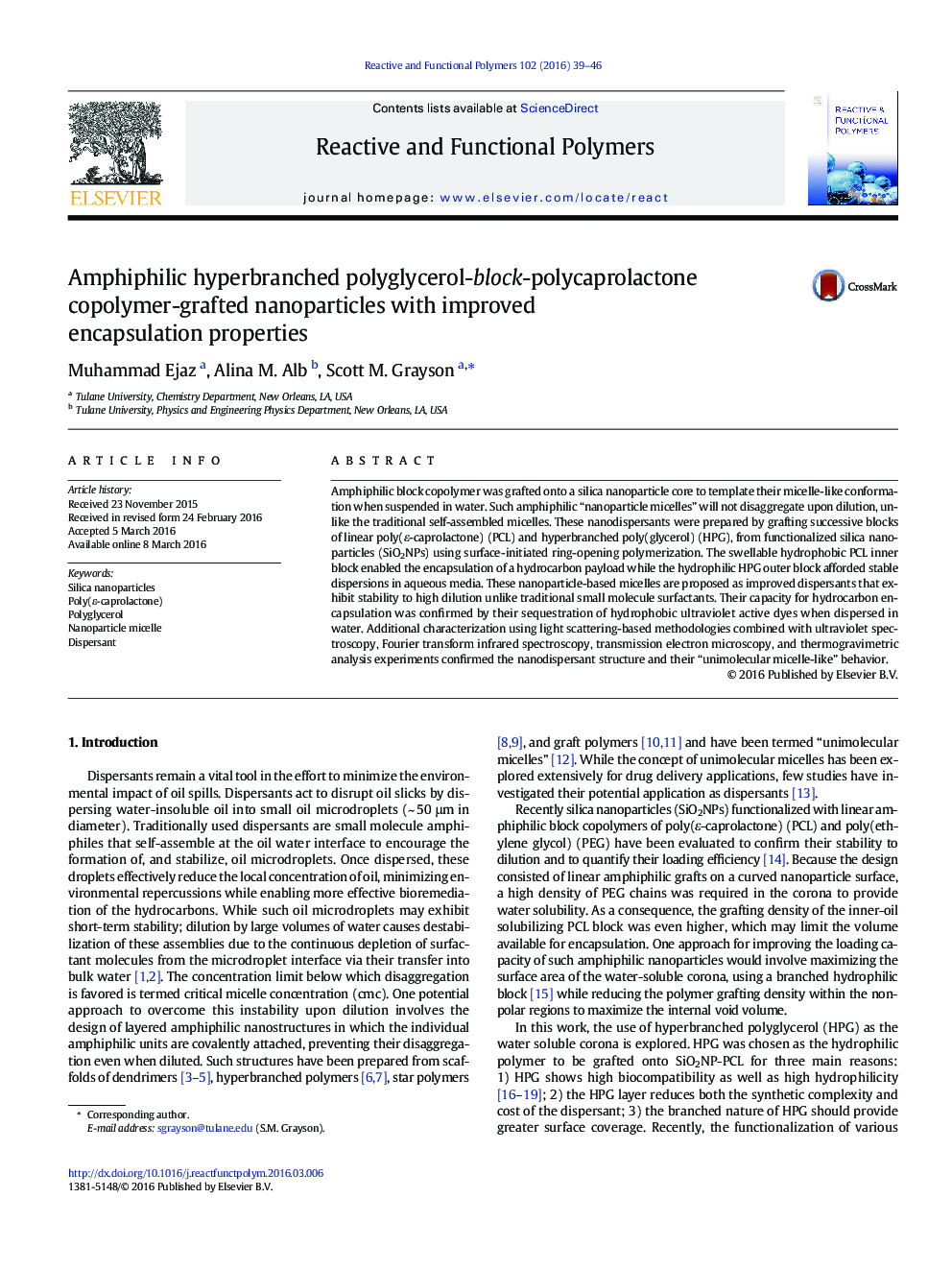| Article ID | Journal | Published Year | Pages | File Type |
|---|---|---|---|---|
| 5209503 | Reactive and Functional Polymers | 2016 | 8 Pages |
Abstract
Amphiphilic block copolymer was grafted onto a silica nanoparticle core to template their micelle-like conformation when suspended in water. Such amphiphilic “nanoparticle micelles” will not disaggregate upon dilution, unlike the traditional self-assembled micelles. These nanodispersants were prepared by grafting successive blocks of linear poly(ε-caprolactone) (PCL) and hyperbranched poly(glycerol) (HPG), from functionalized silica nanoparticles (SiO2NPs) using surface-initiated ring-opening polymerization. The swellable hydrophobic PCL inner block enabled the encapsulation of a hydrocarbon payload while the hydrophilic HPG outer block afforded stable dispersions in aqueous media. These nanoparticle-based micelles are proposed as improved dispersants that exhibit stability to high dilution unlike traditional small molecule surfactants. Their capacity for hydrocarbon encapsulation was confirmed by their sequestration of hydrophobic ultraviolet active dyes when dispersed in water. Additional characterization using light scattering-based methodologies combined with ultraviolet spectroscopy, Fourier transform infrared spectroscopy, transmission electron microscopy, and thermogravimetric analysis experiments confirmed the nanodispersant structure and their “unimolecular micelle-like” behavior.
Related Topics
Physical Sciences and Engineering
Chemistry
Organic Chemistry
Authors
Muhammad Ejaz, Alina M. Alb, Scott M. Grayson,
